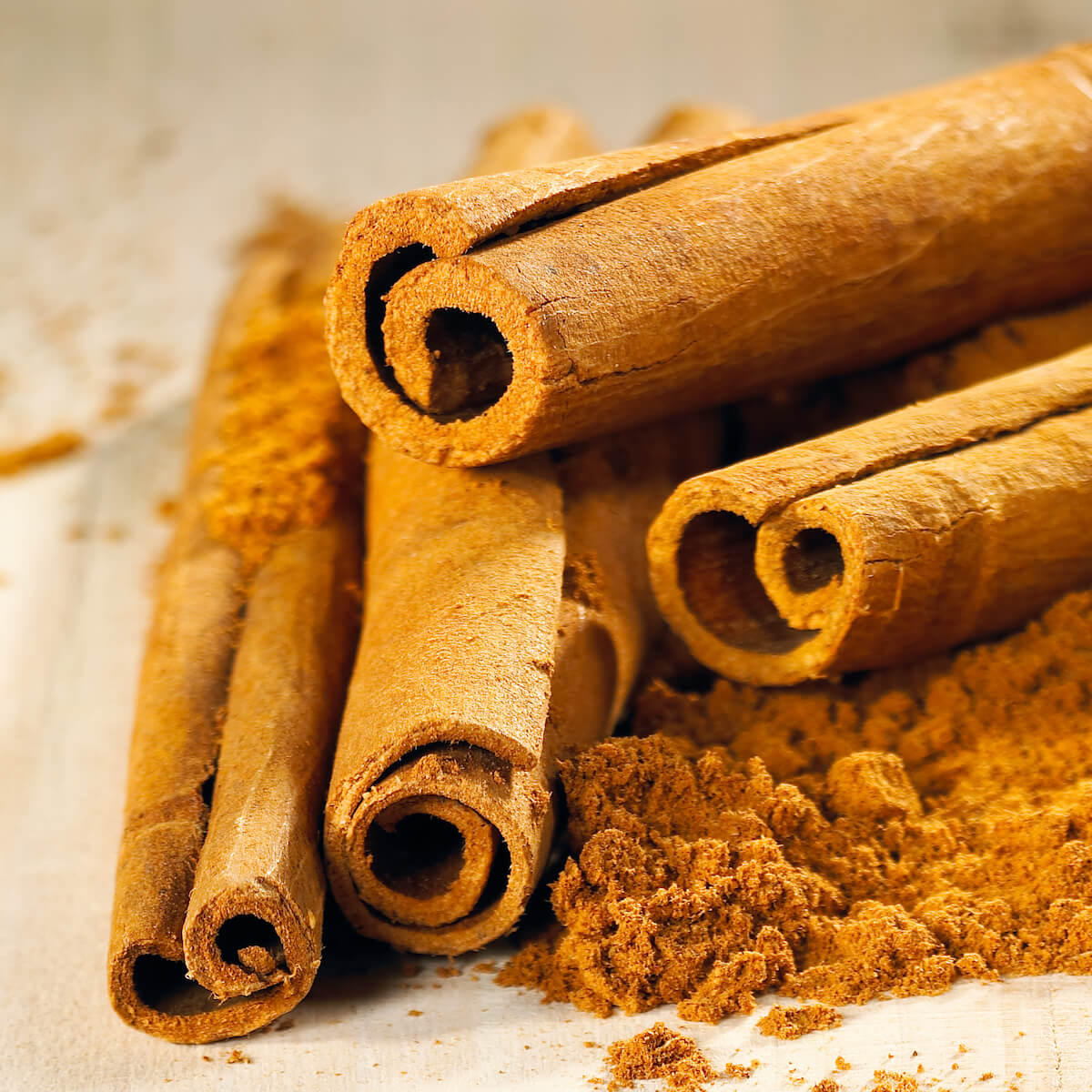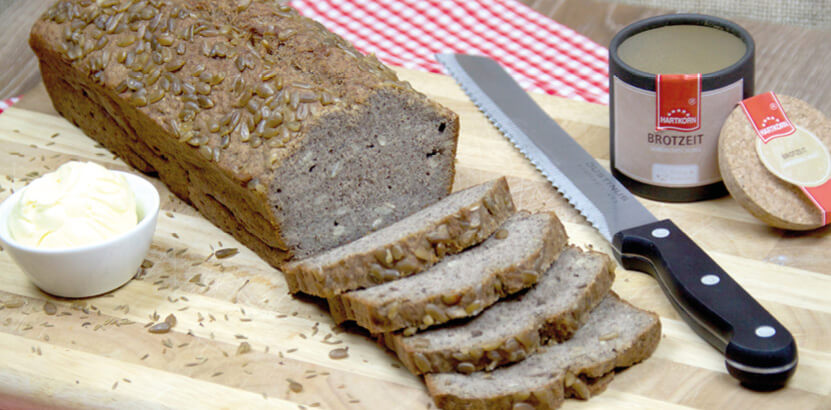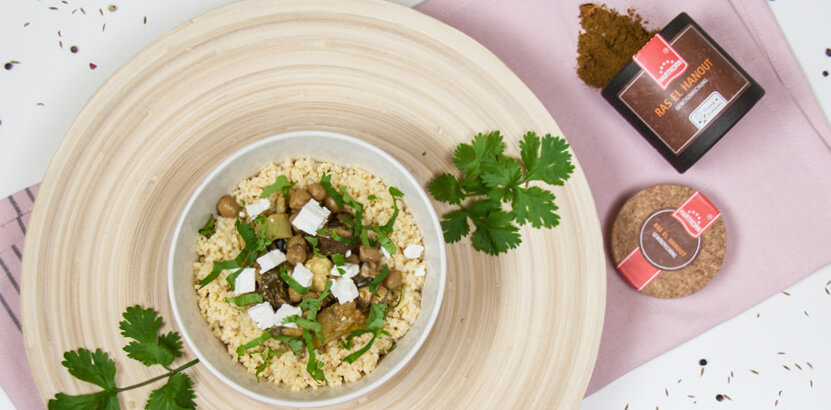Botanical name: synonyms: botanical family: origin: Classification: spice shape: odour: use: The intensity of the unmistakable smell of Ceylon cinnamon depends on the thickness of the scraped bark, i.e. the thinner the Ceylon cinnamon is scraped, the finer and more aromatic the smell it emits. Its sweet and fiery-burning taste is mainly used in ground form as a versatile kitchen spice, for sweet baked goods, compotes, desserts, sweet soups, punchbowls and some hot drinks. China cinnamon or cassia lignea also has a typical cinnamon scent, but its taste is also aromatically sweet, but somewhat tart and less noble than Ceylon cinnamon and slightly astringent due to the content of tannins from the primary bark. The better the bark is scraped, the lower the tannin content. Chinese cinnamon is usually available ground in stores, but is also often mixed with ground Ceylon cinnamon because of its stronger taste. Padang cinnamon or cassia vera, which is just as characteristic and aromatic in its scent, has a spicy, burning taste, similar to Ceylon cinnamon but finer and more powerful than Chinese cinnamon. It is also mainly sold ground. China cinnamon and padang cinnamon are used for the same foods and drinks as Ceylon cinnamon. history: tip: Recipe suggestion: knowledge: Botany: Home & Distribution: cultivation & extraction: Cassia Cinnamon
General information
Use
Things to know

Cinnamomum aromaticum NEES
Chinese cinnamon
Laurel plants
China, Vietnam, Java
Spice
bark
balsamic-spicy
In oriental cuisine, desserts, pastries, Christmas pastries, compotes, puddings, fruit desserts, etc.
Cinnamon is one of the oldest spices in the world. Already more than 4500 years ago, the smell of Kwei, as the cassia was called there, was present in Chinese kitchens. Arab and Phoenician merchants brought the aromatic bark to Egypt in the time of the pharaohs. At the beginning of the 14th century, the Kaneel first came to Europe from Ceylon. But the Portuguese did not yet appreciate the value of the bark. It was not until decades later that they began to capitalise on their accidental spoils. At that time cinnamon was one of the most expensive spices and of great importance. In 1530 the merchant Anton Fugger burned the promissory notes of Emperor Charles V in a fire made of cinnamon sticks in front of his eyes. The cinnamon monopoly set up by the Portuguese was further extended by the Dutch after they took possession of the Portuguese colonial territories, but they were driven from there by the English, who took over the cinnamon monopoly towards the end of the 18th century. London became the main trading centre for cinnamon. It was only when the Dutch later established cassia plantations on Indonesia that the monopoly finally collapsed.
Cassia cinnamon is slightly more bitter than Ceylon cinnamon. Therefore dose more sparingly.
Cinnamon stars: Beat 3 egg whites to snow. Stir in 250 g icing sugar. Save some of this for spreading. Mix 250 - 350 g ground almonds with 2-4 tsp. cinnamon and add to the meringue. Then let the dough rest for 1 hour. Sprinkle sugar on a baking tray and spread the snow mixture on top, approx. 1/2 cm thick. Cut out the stars and brush them with the beaten egg white. Bake at 150° C until the edge is lightly browned and the egg white gets fine cracks. Results in about 20 stars.
Ingredients: Cassia cinnamon contains about 10-100 times more coumarin than its relative Ceylon cinnamon. Coumarin is a natural ingredient of both types of cinnamon, which is said to be harmful to the liver in sensitive people.
Several trees from the species-rich family of the laurel plants, mainly from the genus Cinnamomum, supply the bark which serves as a spice. These are mainly the three species Cinnamomum zeylanicum Blume = Ceylon cinnamon, Kaneel Cinnamomum aromaticum Nees = China cinnamon, Cassia lignea Cinnamomum burmannii Blume = Padang cinnamon, Cassia vera The species vary in appearance, therefore no more detailed description is given here.
Cinnamomum zeylanicum originates from the forests of Ceylon, now Sri Lanka, and southern India. This species is also cultivated in the Seychelles and Madagascar. Martinique, Jamaica, Cayenne and Brazil also supply Ceylon cinnamon. Cinnamomum aromaticum, the Chinese cinnamon, is also known as Cassia lignea and comes from southern China. Other areas of cultivation can be found in Vietnam, on Sumatra and Java and in Japan. Cinnamomum burmannii, the Cassia vera, is native to Indonesia and is today mainly cultivated on Sumatra. As these three species are the most productive in terms of quantity and quality, their cultivation and extraction is described in more detail below.
Ceylon cinnamon is cultivated in cinnamon gardens in the manner of our wicker culture and is kept shrubby. Every one or two years, the fast-growing trees are cut from several to 2 m long shoots, whose bark is curled, slit and peeled off the wood. The outer cork layers and primary bark are removed from the 30 to 100 cm long pieces of bark by scraping. 6 to 10 of the remaining, delicate inner bark, which is only 0.3 to 1.0 mm thick, is pushed into one another to form so-called "quills" and dried first in the shade and later in the sun. They have then taken on the typical yellowish cinnamon-brown colour. The "quills" are then cut into uniform lengths of about 10 cm to form stick cinnamon. The determination of the quality of the Ceylon Quill depends on the colour and fineness of the bark and is expressed in so-called "Ekelle". After 4 to 7 years, the similarly cultivated Chinese cinnamon provides bark removed from the branches by peeling, which is often only insufficiently freed from cork and the layer underneath. This is why Chinese cinnamon or Cassia lignea contains a high proportion of tanning agents. The 30 to 40 cm long pieces of bark are 1 to 3 mm thick, 2 to 5 cm wide and curl up during drying. Depending on their production and provenance, the Chinese cinnamon sticks are divided into the classes "whole selected, broken, whole scraped, broken scraped". The scraped bark pieces obtained from the shoots are 0.6 to 3.2 mm thick and roll up during drying to form double-sided tubes of 0.8 to 2.0 cm diameter and up to 1 m long. For Padang cinnamon, there is a Prima quality grading (AA and A) according to the German standard: finest, fawn-brown goods made of 0.8 to 1.5 cm wide sticks, which are sometimes put together from very thin bark in the manner of Ceylon cinnamon, are very suitable for grinding cinnamon powder. Secundo quality (B). Less well peeled bark pieces and up to 2 cm thick sticks, lighter yellowish-brown than AA and A. Tertia quality (C): This grade consists of fragments of the first two classes.
http://de.wikipedia.org/wiki/Zimt







